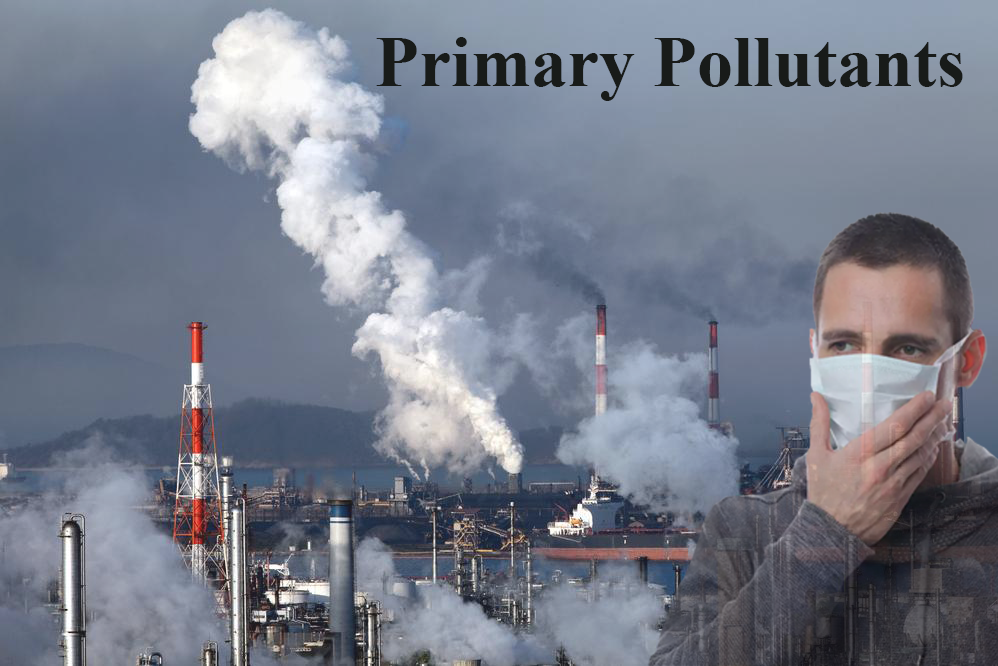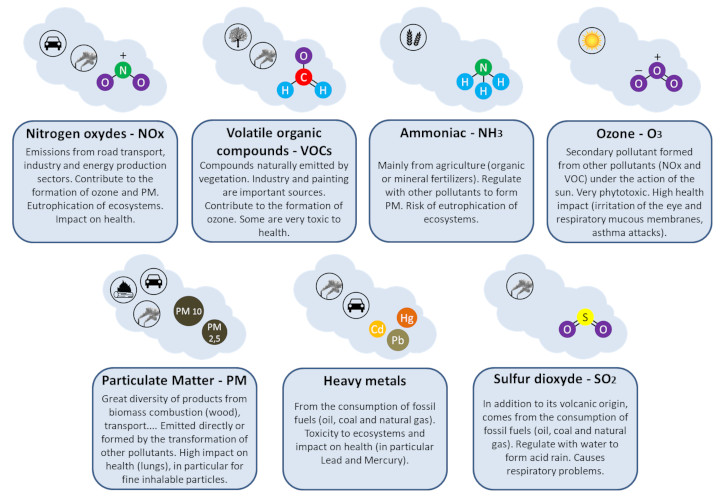Primary Pollutants

Outdoor air is filled with millions of particulate pollutants. Apzem provides the industry best experts who perform Air Quality Monitoring Services for Stack, Indoor & Ambient Environment .
Air is not clean in nature, because of natural and man- made pollution. Gases such as CO, SO2 and H2S are continuously released into the atmosphere through natural resources Ex: Volcanic activity, Vegetarian decay and forest fires. Air are distributed from the tiny particles of solids and liquids by wind, Volcanic explosion and other natural explosion.
The main sources of air pollutants are primary pollutants, Secondary pollutants, and Particulate Matter.
CARBON MONOOXIDE
Carbon monoxide is released into the atmosphere mainly from the automobile fume, smoke, and vapor. Next to carbon dioxide. Carbon monoxide is considered to be the most abundant pollutant and it may show wide diurnal variations in the urban atmosphere. Concentrations of carbon monoxide vary, depending upon the density of motor traffic. However. Carbon monoxide is usually present in amounts far below the threshold concentration in areas where traffic is less.
SULPHUR DI-OXIDE
Sulphurdioxide is one of the principal contaminants of air. Sulphur dioxide has its origin in the combustion of sulphur being fossil fuels. It is also present in appreciable quantities in air where coal is used as a fuel. Electric power plants. Sulphur dioxide is also released from smelters where sulphur as an ore is roasted e.g., in copper. Lead and Zinc smelting industries. Oil refineries. Sulphuric acid manufacturing industries. Fertilizer industries and paper and pulp industries give out significant amounts of sulphur di oxide Smelting operations are reported to cause heavy damage to agricultural and forest areas. Since sulphur di oxide is readily absorbed by water surfaces, soil and vegetation, deterioration and corrosion affect materials such as metals, paper, paints leather, textiles, cement, and other building material.
HYDROGEN & ORGANIC SULPHIDE
Sulphide causes odour nuisance when present even in very low concentration .However, there are not released in appreciable quantities by industrial operation since the effluents are treated before they are exposed to the atmosphere. Natural Gas refining manufactures of coke, manufacture of paper, distillation of tar and petroleum , manufacture of viscose rayon and some other chemical processes produce hydrogen sulphide.
HYDROGEN FLUORIDE
Hydrogen Fluoride and other volatile fluorides are considered to be serious pollutants even where present in concentration of 0.001 ppm by volume. Fluorides are liberated mainly from aluminum smelting industries Moreover, fluorides have the capacity to etch glass and can thee, cause considerable material destruction
HYDROGEN CHLORIDE
The concentrations of hydrogen chloride in the atmosphere are found to be less. However, higher concentrations can cause damage to vegetation and also to properties.
NITROGEN OXIDE
The primary, source of oxides of nitrogen is automobile exhaust. These are also produced as by product of some chemical industries such as manufacture of nitric acid, manufacture of sulphuric acids manufacture of nylon intermediates. It is reported that the products of combustion of natural, contain up to 50 ppm of nitrogen. The oxides of nitrogen are the second most abundant atmospheric pollutants. These are extremely dangerous to human health. The effects are sometimes more severe than carbon monoxide.
ALDEHYDE & ORGANIC ACID
These are present in lower concentrations in the atmosphere. The incomplete combustion of petroleum fuels and incomplete oxidation of lubricating oils from aldehydes and organic acids combustion of natural gas may also contribute to the formation of these materials.


